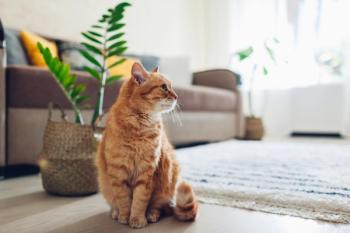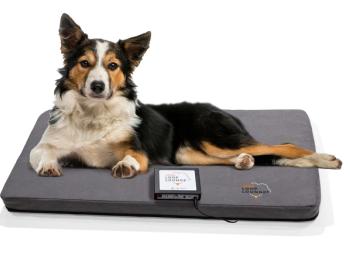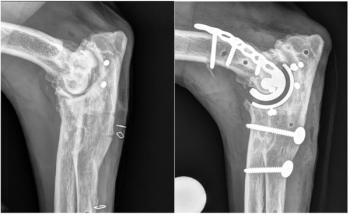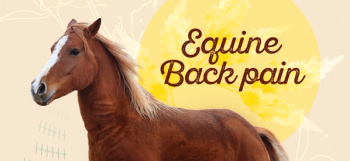
Anesthesia monitoring: Part I (Proceedings)
The word anesthesia means without sensation-–our goal is to provide unconsciousness, amnesia, analgesia and muscle relaxation for a variety of procedures both invasive and non-invasive.
• The word anesthesia means without sensation-–our goal is to provide unconsciousness, amnesia, analgesia and muscle relaxation for a variety of procedures both invasive and non-invasive. Our ability to carefully string our patients out along the line between life and death compromises homeostasis making close monitoring essential.
Why monitor?
• Anesthetic emergencies are difficult to predict
• Anesthetic emergencies happen quickly
• Anesthetic emergencies can be devastating
• It is better to be proactive rather than reactive
Our goal
• To be able to walk that line with confidence by maximizing the safety of the anesthetic experience
Morbidity and mortality (M&M)
• Morbidity refers to the prevalence of disease (related to the anesthetic event in this case)
• Mortality refers to the chances of death
• Certain problems are more likely to increase M&M
o Excessive bradycardia
o Cardiac depression
o Vasodilation
o Hypotension
o Arrhythmias
o Hypoventilation
o Hypoxemia
o Hypothermia
• Diligent monitoring allows us to recognize and treat potentially life threatening problems
Monitoring basics
• If you only had eyes, ears and hands...
o Heart rate
o Pulse quality and vasomotor tone
o Respiratory rate and character
o Reflexes and muscle tone
o Eye position
o Body temperature
• Monitoring multiple parameters gives you a more complete picture of the physiologic status of the patient
Heart rate
• Stay away from extremes...
• Bradycardia
o Heartrate is too slow when it is associated with decreased cardiac output, hypotension and/or poor perfusion
o Dog low 50's (with normal BP- also dependent on size, small dogs have higher heart rates...)
o Cat low 100's (with normal BP)
o It is also important to monitor blood pressure (BP) and end-tidal carbon dioxide (ETCO2)
• Tachycardia
o Decreases filling time of ventricle and increases myocardial oxygen consumption- a double whammy!
o Dogs 180-200 (size dependent)
o Cats 240-280 (size dependent)
• Some cause of extremes of heart rate (and potential ways to remedy them)
o Bradycardia
• Anesthetic overdose (lighten up)
• Opioid administration (give an anticholenergic)
• Alpha-2 agonist administration (reverse or no treatment)
• Hypothermia (rewarm)
• Hypoxia (oxygen therapy)
• 1st and 2nd degree A-V blockade (anticholenergics)
• High vagal tone (anticholenergics)
o Tachycardia
• Too light (deepen)
• Painful (give analgesics)
• Ketamine administration (no treatment)
• Anticholenergics (decrease dose next time)
• Inotropes (decrease infusion)
• Hypovolemia (restore volume)
• Hyperthermia (cool)
• Hypoxemia (oxygen therapy)
• Hypercarbia (ventilate or eliminate rebreathing of CO2)
• Anesthesia recovery (comfort or no treatment)
Pulse quality and vasomotor tone
• Palpation of a pulse is a subjective way of approximating blood pressure. It is done by evaluating the height and width of the pulse pressure wave form compared to normal
o Bounding pulse- vasodilation as seen in sepsis and hypovolemia, vessel is easily collapsible (complexes would appear tall and wide)
o Weak and thready pulse- vasoconstriction as seen with alpha-2 administration, poor cardiac function, tachycardia, small stroke volumes (complexes would appear small and narrow)
• Pulse quality is largely a reflection of stroke volume (the volume of blood pumped with each beat) and vessel size or vasomotor tone (vasodilation vs. vasoconstriction)
• Vasomotor tone
o Regulates both peripheral and visceral perfusion
• Vasodilation
- Improves peripheral perfusion
- Causes hypotension
• Vasoconstriction
- Impairs peripheral perfusion
- Improves blood pressure
o Assessing vasomotor tone
• Mucous membrane color and capillary refill time are good guides
- Pale = vasoconstriction, CRT less than 1 sec
- Pink = normal, CRT 2 sec
- Red = vasodilation, CRT greater than 2 sec
o Causes of vasodilation and vasoconstriction
• Vasodilation
- Systemic inflammation
- Sepsis
- Hypercapnia
- Hyperthermia
- Drugs (acepromazine, inhalants
• Vasoconstriction
- Hypovolemia
- Heart failure
- Hypothermia
- Drugs (alpha-2 agonists, sympathomimetics)
Pulse sites
• Femoral artery
o Large vessel but can be difficult to palpate in obese and heavily muscles animals
• Dorsal metatarsal artery (dorsal pedal)
o Smaller artery over dorsal aspect of metatarsals
o Very accessible, great for arterial catheter placement
o Can be difficult to palpate in vasoconstricted, hypotensive, or small patients
• Coccygeal artery
o Ventral tail (strongest at the base of the tail)
o can be stinky but is often useful for arterial catheters (must use aseptic technique)
• Radial artery
o Just proximal to the metacarpal pad
o Can be difficult to palpate in vasoconstricted, hypotensive, or small patients
• Lingual artery
o Ventral tongue near lingual frenulum
o Only useful in adequately anesthetized patients (great place to grab a pulse intra-op!)
o Arterial catheters can be placed here but hematomas are a problem
• Chest
o Good place to grab a heart rate in cats, small dogs and other small animals
Respiratory rate and character
• All anesthetic drugs provide some degree of respiratory depression
• A change in breathing is a good indication of a change in patient status
• Respiration is comprised of tidal volume (TV), respiratory rate (RR), and minute volume (MV)
o TV (Vt) = the volume of air in a single breath (10-20 mL/kg)
o RR (f) = the number of breaths per minute (8-15 br/min)
o MV (V) = total volume of air breathed per minute (150-250 mL/kg/min)
o TV X RR = MV
• Respiratory character
o Shallow breaths
• Decreased TV (may have an increased RR to normalize MV)
o Deep breaths
• Increased TV (may have a decreased RR to normalize MV)
o Apneustic
• Inspiratory hold (commonly seem with ketamine administration)
o Apnea
• Lack of spontaneous breathing
• Common after barbiturate induction (must assist breathing until drugs are metabolized/redistributed- apnea must be treated!)
• Too deep (lighten up)
• Hypothermic (warm)
• Over ventilated (back off)
o Bradypnea
• Slow RR
• Without ETCO2 monitor or a blood gas analyzer you don't know if this patient ventilating adequately (assist or sigh)
• Hypothermic (warm)
• Too deep (lighten up)
o Tachypnea
• Increased RR (many possible causes)
• Too light, too deep, hypoxia, hypercapnia, hyperthermia, hypotension, painful, septic, atelectic...
• Give some larger breaths, check body temp, check BP, assess pain, assess anesthetic level...
• Ventilation
o Hypoventilation and hyperventilation
• These can only be accurately assessed using an ETCO2 monitor or a blood gas analyzer
Reflexes and tone
• The presence of reflexes indicates a lighter level of anesthesia
o This is not always a bad thing!
o If it doesn't interfere with the procedure and the animal is stable, go with it
o The corneal reflex should always be present (unless paralyzed)
• Tone can be assessed as none, some or lots
o Jaw tone, anal tone, general muscle tone
o No tone at all may indicate that the patient is too deep or just right
o Some tone is ok and even good (as long as it doesn't interfere or cause harm)
o Lots of tone is not good (animal is awake and looking at you)
Eye position
• The eye is a little window into the CNS...
• Mydriasis is dilation, miosis is constriction
• If the eye is centrally facing
o Animal is either too deep or too light- look at pupil size
• Medium pupil- animal is probably light
• Dilated pupil- animal is too deep, immediate change is necessary
• Constricted pupil- animal is too deep, immediate change is necessary
• If the eye is ventral-medial
o Your animal is at a good anesthetic plane
• Drugs can affect eye signs and pupil size
o Opioids cause mydriasis
o Ketamine can maintain palpebral reflex
Temperature
• Anesthesia depresses muscle activity, metabolism and thermoregulation
• Good range is 98-102 degrees Fahrenheit in dogs and cats perianesthesia
• Hypothermia can be an anesthetic- decrease your doses in hypothermic patients!
o Animals less than 98 are hypothermic
• 96-98 is mild hypothermia
• 94-96 is moderate
• 90-94 is severe (decrease anesthetic requirements, prolonged recovery)
• Less than 90 is moribund (CNS depression, death is imminent)
o Animals greater than 103.5 degrees Fahrenheit are hyperthermic (normal 100.5-102.5)
• Cell damage occurs at 108 degrees and above
• Malignant Hyperthermia (MH)
- Genetic predisposition seen in dogs, pigs, humans, horses and some cats
- Precipitated by inhalant anesthesia
- It is a rapid, relentless, progressive increase in body temp
- Can cause muscle rigidity and elevated potassium
- Treatment- aggressively cool, discontinue inhalant, administer Dantrolene, maintain on oxygen
You
• Your eyes, ears and hands can make excellent monitors if you know how to put them to work!
• Some words of wisdom to remember forever...
o Be aware
o Look at the whole picture (co-existing disease, drugs given and currents meds, procedure, species, breed...)
o Seek knowledge
• Knowledge builds confidence; the more you know the more confident you will be
o Enjoy yourself
• Anesthesia is fun
References
Dorsch JA, & Dorsch SE. Understanding Anesthesia Equipment. Baltimore: Williams & Wilkins, 1999
Haskins, SC. Monitoring Anesthetized Patients; Muir, WW. Cardiovascular System; McDonnell WN & Kerr, CL. Respiratory System; Bednarski, RM. Dogs and Cats; All In: Tranquilli WJ, Thurmon JC, Grimm KA, eds. Lumb & Jones Veterinary Anesthesia and Analgesia. Iowa: Blackwell, 2007
Newsletter
From exam room tips to practice management insights, get trusted veterinary news delivered straight to your inbox—subscribe to dvm360.






